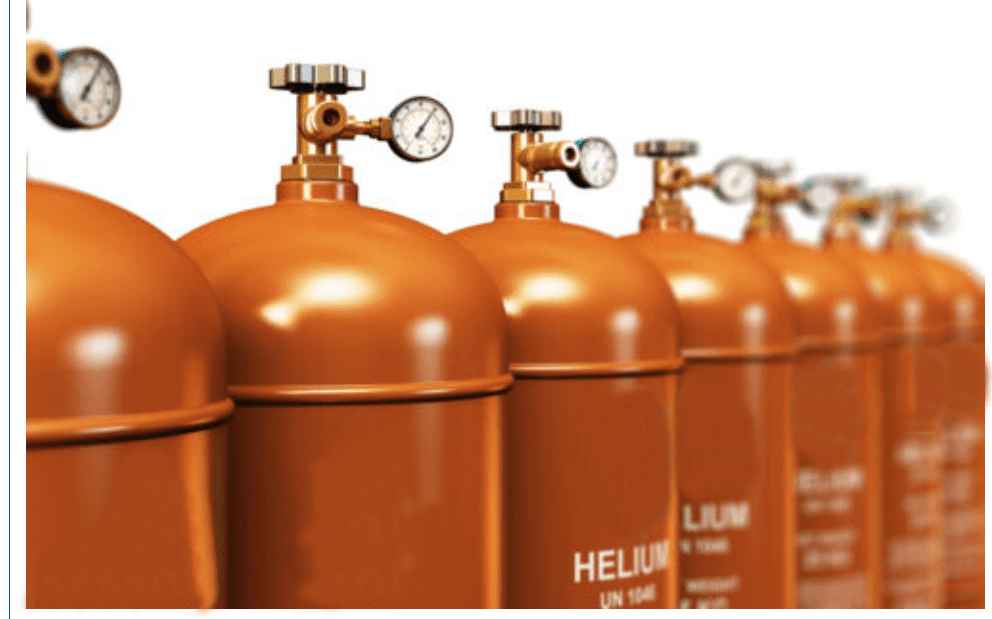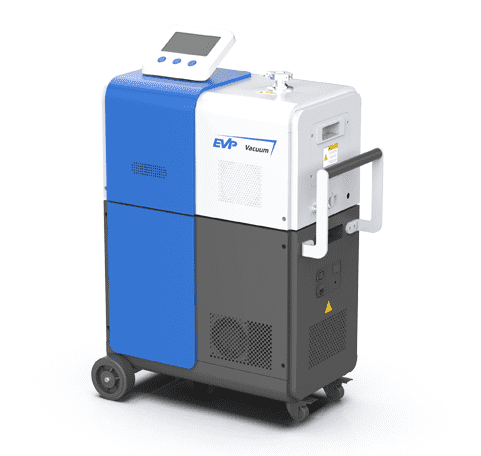Helium leak detection through Mass Spectrometer
Helium gas during leak testing several practical techniques for saving

Thanks to its excellent performance, helium has been widely used as a tracer gas for leak testing:
The natural background of helium in the air is very low, so the leaked gas can be reliably separated from the surrounding air;
Helium is inert and will not react with any other medium;
Helium will not be discharged into typical industrial testing areas;
Helium is harmless to health and meets environmental requirements.
However, due to the scarcity of helium, its price has remained high, bringing considerable cost pressure to leak detection operations. In order to help users save costs as much as possible, we have specially compiled multiple methods, detailed steps, and precautions for saving helium in vacuum leak detection. We hope this can be helpful to you
Scientific control of helium concentration: As an inert gas, helium only needs to be mixed with air to be used for leak testing. Moreover, in many industrial applications, pure helium is not required. Therefore, by scientifically controlling the concentration of helium in the mixed gas, it is possible to ensure detection accuracy while saving gas costs.
So, how to control the helium concentration?
1) Understand the relationship between helium concentration deviation and detectable leakage rate deviation
Any deviation in helium concentration in a mixed gas can lead to a deviation in the leakage rate, which is usually amplified.
For example, a leak test requires the use of a 10% helium gas mixture. If the helium concentration fluctuates by ± 10% (helium concentration fluctuates between 9% and 11%), the detected leakage rate deviation is ± 10% (=1%/10%).
In order to accurately detect leaks, the concentration of the helium mixture should be controlled within 5% of the absolute concentration range (for example, in the case of a helium concentration of 10%, the concentration should always be maintained between 9.5% and 10.5%), and the deviation of the leakage rate will also be controlled within 5%. For example, a leakage rate of 2.10-5 mbar · l/s is displayed as a leakage rate of 2.1-10-5 mbar · l/s.
2) Use a leak detector with sufficient sensitivity
Because the leak detector only reacts with the helium portion in the tracer gas, the leak detector used when using diluted helium for detection must have sufficient sensitivity. For example, if the tracer gas mixture contains 10% helium, the leak detector must be able to detect a leak that is one tenth smaller than the actual leak rate, which is 1/10 of the leak rate.
3) Adjust the leak detection process based on diluted helium gas
When diluted helium is used, it is also necessary to adjust the standard operating procedures for leak detection in advance, mainly including calibrating the leak detector and setting the trigger level. You can compensate for the lower helium concentration by adjusting the trigger value or adjusting the leakage rate in the calibration procedure.
Tip: Our sniffing leak detector allows you to enter the concentration of helium gas used in the leak detector menu, and the leak detector software will automatically make all adjustments for easy and reliable use of diluted tracer gas. If you are using our sniffing leak detector, you can skip the rest of this chapter and proceed directly to the next title.
Detecting helium leakage through a mass spectrometer
When adjusting the trigger value, the new trigger level should be set to the original value multiplied by the helium concentration.
Example: If you want to test a rejection leakage rate of 2.10-5 millibar liters per second and only intend to use 10% helium, you need to adjust the trigger level to
2.10-5 mbar · l/s * 10%=2.10-6 mbar · l/s.
If you want to test the rejection leakage rate of 3.10-6 millibar liters per second and only plan to use 30% helium, you need to adjust the trigger level to
3.10-5 mbar · l/s * 30%=9.10-6 mbar · l/s.
Additionally, if you want to compensate for helium concentration during the calibration process, the most direct method is to use a test leak for calibration, which is also filled with helium concentration. However, you can also use a calibration leak filled with pure helium for proper calibration. To achieve this, simply adjust the calibration leakage rate according to the helium percentage. The leakage rate used in calibration settings should be the leakage rate of the test leak divided by the helium concentration.
Example: 3-10-6 mbar · l/s calibration leakage will be used for calibration. The system will use a 10% helium mixture in the air. Therefore, only 10% of the leaked gas is helium. In this case, the leakage rate can be set to 3.10-6 mbar · l/s/10%=3.10-5 mbar · l/s. In the calibration program, the system will correctly display all detected leakage rates after calibration
If you are using the same calibration leak but plan to use 30% helium, you will need to adjust the calibration settings to
3.10-5 mbar · l/s/30%=1.10-4 mbar · l/s.
Please note that in this method, the trigger value should not change its original value.
4) Using a leak detector with good linearity
When using lower concentrations of helium, the helium signal of the leak detector will be closer to the detection limit of the leak detector. In this case, it is important to note that a larger leakage rate must be used for calibration in order to obtain accurate and reproducible calibration results. However, this requires leak detection equipment to have good linearity and accuracy.
5) Using dynamic background suppression in vacuum leak detection
The use of diluted helium gas can save a lot of costs when detecting larger volume components. However, in vacuum leakage testing, using low concentration helium gas requires waiting for a lower background level, and vacuuming the vacuum chamber will also consume a lot of time as a result.
To address this issue, dynamic background suppression (under application) has been introduced. The detection system has excellent repeatability and linearity, and can accurately predict the decline of background signals. It can reliably measure small leakage rates without missing detections even when the background is constantly decreasing. Through background prediction, measurements can be quickly initiated, saving a significant amount of helium without affecting throughput.
Recycling and reusing helium: In many industrial processes, helium consumption can also be reduced by recovering helium from the components to be tested after leak detection. Normally, only the overpressure portion filled with helium is recovered. For example, if a component is filled with 5 bar helium for leak testing, the helium will be discharged back into the tracer gas supply system until the pressure in the component drops to atmospheric pressure. In this case, 80% of helium can be recovered. The remaining helium will remain in the components for transportation.
When using a helium recovery system, the amount of helium in the system will decrease with each testing cycle. Therefore, the helium recovery system needs to be refilled with fresh helium to maintain a constant helium concentration. In our practical application, each testing cycle requires recharging the system with 20% internal helium gas.
The helium recovery system can also be used to dilute helium gas. In this case, the amount of helium that the system needs to recharge will be greatly reduced. If 10% helium is used in the air, the system only needs to refill 2% of the internal parts volume with helium during each testing cycle
Flexible selection of helium with different purities: Helium can be classified into different grades based on its purity, and generally speaking, the lower the grade, the lower the selling price.
Helium Grade Helium Purity
Helium 5.0 99.999% helium and 0.001% impurities
Helium 4.0 99.99% helium and 0.01% impurities
Helium 3.0 99.9% helium and 0.1% impurities
Helium 2.0 99% helium and 1% impurities
Helium 3.5 99.95% helium and 0.05% impurities
Even pure helium has an impurity content of only 1%, resulting in a leakage rate error of only 1%. Moreover, even if this low purity helium gas is mixed with air by 10%, the leakage rate error caused by impurities is only 1%.
Any level of helium, even as low as 2.0 levels, can be used smoothly for leak detection. Therefore, flexibly selecting different grades of helium according to actual testing needs is also an effective way to save gas costs
Reduce the inflation pressure of components?
In actual testing, some users may request a decrease in the inflation pressure of the components (in order to reduce the helium required for inflation), and then test whether the leakage rate is reduced. The leakage rate usually varies with the square of pressure, that is, if the inflation pressure is halved, the leakage rate will be 1/4 of the original.
But this is a theoretical result, and the leakage rate can also be influenced by other factors. Some leaks may only manifest at higher pressures, so the leakage rate may be low at low filling pressures, but it will increase at working pressures. Therefore, we recommend always using a tracer gas filling pressure equivalent to the working pressure for testing.
(The article comes from the Internet. If reprinting is not allowed, please contact our company to delete it.)

